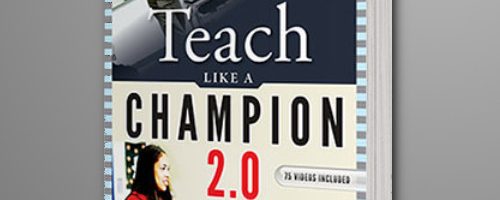Title – Teach Like a Champion 2.0
Author – Doug Lemov
Length – 469 pages
Review
‘Teach Like a Champion’ is aimed at teachers of knowledge rich subjects. Almost all of the videos and most of the examples in the book are focused on English and Mathematics classes where the ultimate goal is to prepare students for higher learning at University.
The strategies that are covered are worth knowing about BUT not all of the strategies will be used by all teachers all of the time in the same way. All of the strategies assume a teacher-led environment where students are heavily involved and invested in the process. There is little mention or evidence of technology or Learning Management Systems being used and no advice on how this can be done well.
At times it felt like the book only covers half the story – we hear about scholar dollars and see them being earned for outstanding work and lost as a consequence of last resort, but the implementation of that system is not mentioned in the book. Likewise, the book does not cover how students have been encouraged to attend all of their classes. This is a pity as student attendance is one of the key factors that contributes to student success / lack thereof in my classroom.
We also saw / heard a lot about ‘packets’ which looked like sets of worksheets but the focus in the book was on delivery rather than class preparation. In ‘Teach Like a Champion’, there is no discussion of how Champion teachers manage the workload associated with following the book’s strategies.
One thing that made the book tricky to read at times was the sheer number of acronyms. Whilst these have been faithfully defined when they are first used, I frequently found myself having to backtrack to remind myself what GPGQ, RIG and SLANT / STAR stood for.
The content of the book was mostly inspiring although it would be great if there was a companion book aimed at how to teach more hands on / practical subjects ‘like a Champion’.
Reflections
This book was a timely reminder of a number of strategies that teachers can use to improve student achievement. Below is a list of strategies which resonated with me…
- Culture of Error – This echos ‘Rule 5: Errors are inevitable, how you handle them matters’. Whilst my classroom already has a bit of a culture of error, normalising errors and showing students how they are an important step in the learning process is something that I can easily incorporate into what I already do.
- High Academic Expectations – Strategies like ‘no opt out’, ‘right is right’ and ‘stretch it’ are extremely useful and having a range of strategies which will enable me to demand (and get) the best from my students is quite exciting.
- One strategy that I already use that was mentioned in the book is ‘Show Call’ – only I call it ‘I say, you say’. This is a useful idea for when students need to memorise / internalise key ideas that are integral to their success in our Computer Science externals. How it works is that we memorise a series of calls / trigger words that allow students to remember the absolute ‘must have’ material. For example, “I say lossless, you say ‘keeps data’ helps students remember the difference between the main types of compression.
